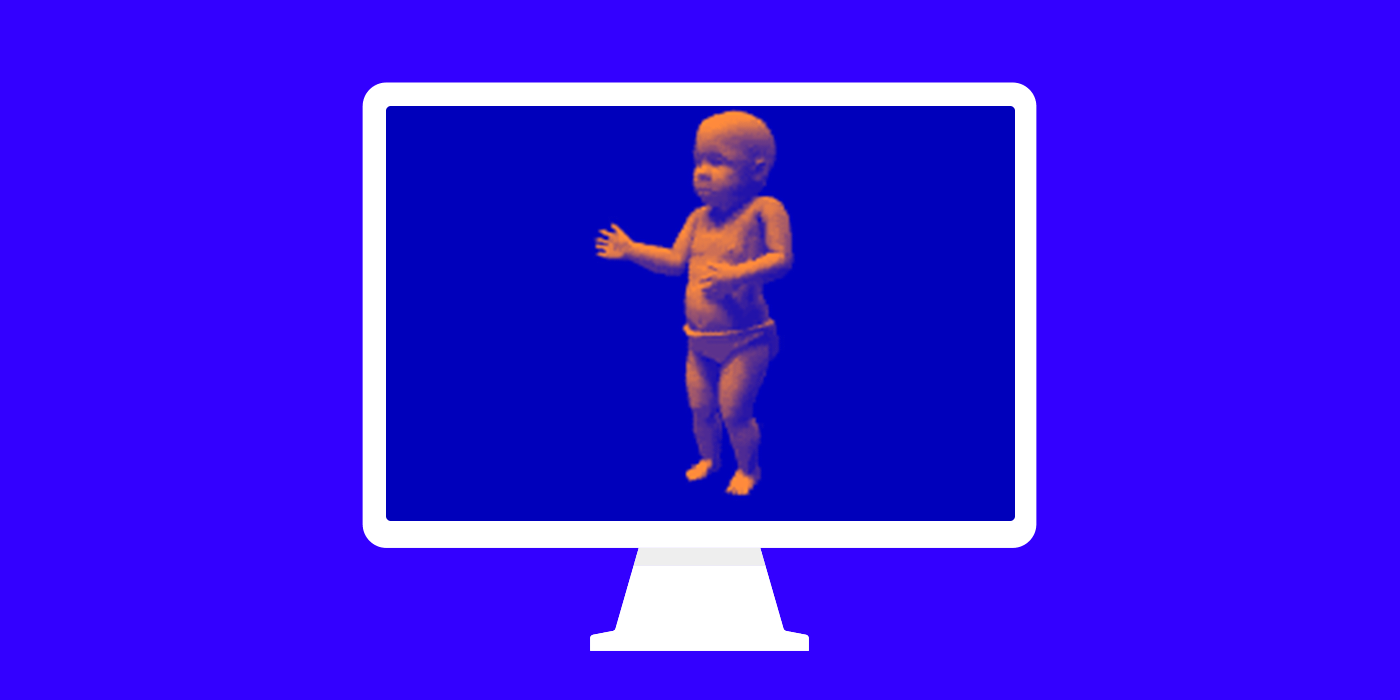For app makers and developers, GIFs mean business.

The most vaunted feature emerging from Apple’s June iOS 11 unveiling wasn’t Siri’s new translation abilities or a smarter keyboard. It wasn’t even announced on the WWDC stage. But developers and customers alike quickly heralded the new support for GIFs in the Photos app with unfettered joy, signalling that those short animated videos had officially shifted from zeitgeist oddity to required communication tool.
There are GIF art shows inside physical galleries. GIFFest recently took place in Singapore, sponsored by the city-state’s National Arts Council. In Boston, the Massachusetts Bay Transit Authority recently partnered with GIF startup Giphy to use looping GIFs of cute animals to teach passengers subway etiquette. The NFL even got into a tussle when it expressly forbid NFL teams from posting GIFs made from game footage to Facebook or Twitter.
The medium is growing as a format for advertising and even monetization, too. In early 2017, Facebook quietly tweaked their product so advertisers could post animated GIFs in the newsfeeds of targeted customers. However, copyright issues surrounding GIFs remain an obstacle to advertisers: Fair use issues around GIFs extracted from television shows, pro sports, and movies remain unclear. Companies like Giphy and Tenor are working with content partners to establish licensing agreements and fair use agreements that offer clarity to advertisers.
And artists like Pi-Slices, the founder of the GIF Artists Collective, are helping other artists working in the GIF medium to promote their work. These artists can make money creating original GIFs for clients, used for everything from on-stage backdrops for DJs to promotional tools for brands.
To what can we attribute the swift rise of GIFs to global cultural phenomenon? It’s a combination of factors, but messaging is without a doubt the most responsible.

The Rise of Messaging
Since their creation in 1987 by Steve Wilhite, a programmer at online service Compuserve, GIFs have been one of the web’s most popular image formats. Although GIFs were originally static, by 1989 users had figured out how to use the format to make short looping animations. Nowadays, say “GIF” (whether you pronounce it ‘Ghif’ or ‘Jif’), and it’s synonymous with a short animated looping video.
Messaging apps now have 20% more monthly active users globally than social networks.
Because GIFs are easy to use and easy to integrate into mobile messaging, they developed a massive following alongside the explosion in messaging apps during the last five years. “If you look at the explosion of messaging and communication channels over the past five years, GIFs are mainly used for lightweight messaging, which corresponds with growth in messaging platforms,” says Gregg Spiridellis, founder of JibJab.
According to research from BI Intelligence, messaging apps now have 20% more monthly active users globally than social networks. Falling data prices, cheaper devices, and improved features are helping propel their growth, the report notes. “The first stage of the chat app revolution was focused on growth. In the next phase, companies will focus on building out services and monetizing chat apps’ massive user base.”
Coupled with the platform is the unique emotional connection of the medium to nearly everyone: GIFs express some things much better than still text or images. “Rather than produce original content to convey every human sentiment, there’s a GIF out there for it,” said Spiridellis.

These days, GIFs are integrated into a wide range of platforms including Facebook Messenger, Twitter, Slack, and most SMS clients. JibJab offers a perfect example of how companies have grown to work with GIFs, and how GIFs became a widespread visual communications tool. Originally a digital production studio best known for satirical web videos, JibJab evolved over the years into a creator of digital ecards and mobile apps. Their flagship mobile product, JibJab, relies on GIFs: The app’s software tools let users superimpose their faces onto animated GIFs, which can then be sent via third party apps such as Facebook Messenger or iMessage.
“GIFs are a way to react to something, convey an emotion, or react to a conversation in a more sophisticated way,” says Bryan Bartlett, senior creative manager at computer vision adtech firm GumGum. “Instead of saying ‘haha, it’s funny,’ you can use a meme of Will Ferrell laughing into a glass of wine. GIFs are an easy way to add a layer of meaning to those emotions — and they’re part of our language now.”
Bartlett says that because GIFs loop their video and generally have extremely small file sizes, GIFs have an advantage for mobile consumers versus other file formats like JPEG or PIF. “Within the design community, it’s hard to say why GIFs beat other formats. However, a lot has to do with technical issues in terms of compression rates and limits to colors, and reduced file sizes.” Bartlett identifies GIFs as a key part of an online imaging ecosystem that also includes other short-form video formats and online services which serve short videos like Instagram.
For developers, the limitations of GIFs ironically make them indispensable for app integrations. GIFs only support 8 bits per pixel in each image, and only 256 colors can be used in each frame in a GIF animation. The animations themselves have to be extremely short and low resolution; Giphy limits uploads to 100MB, with a fifteen-second time limit per clip. Because GIFs are so lightweight, they are easier to integrate into apps than other file formats.
“It’s fun to work within the restrictions of the format. Most of my GIFs are less than two seconds long, and I do my best to make every single one a perfect, seamless loop,” said Pi-Slices in an email to Built to Adapt. “Tumblr…had a very low file size limit for uploading GIFs, less than 2MB. Even now it’s still comparatively really low at 3MB. Finding ways to work within that restriction also feeds my creativity, but I wouldn’t mind the limit being much higher.”

GIFs Mean Business
No other company has championed the integration of GIFs into all parts of our lives quite like Giphy. Giphy was created in 2012 when two New Yorkers, Alex Chung and Jace Cooke, were discussing the rise of post-visual communication and how GIFs were being used as a shorthand to express emotions. A few months later their discussion turned into a startup.
2 billion GIFs a day are currently sent over Giphy.
The GIF-centric company quickly received a $1 million investment offer from New York collective Betaworks. The rest, as they say, is history. 2 billion GIFs a day are currently sent over Giphy, which integrates with third party providers like Facebook, Twitter, and Slack. Giphy has content partnerships with Disney, HBO, and Calvin Klein, among others, and has a full suite of mobile apps. According to a late 2016 Fortune article, Giphy is worth approximately $600 million.
Giphy has a massive corpus of embeddable GIFs and, along with competitors like Tenor, makes it extremely easy for ordinary users to communicate via GIF in third-party apps and platforms.
In fact, GIFs are so effective inside apps that users don’t even realize they’re using them at times. Facebook’s popular Boomerang app for Instagram lets users instantly create Instagram-compatible GIFs.
Nick Hasty, Giphy’s head of engineering, says their integrations with outside services allow developers (and users) to search Giphy’s massive database and include Giphy content in in-product communication. “The same API that we provide to Facebook and Slack is available to any developer who wants to sign up for a key to the integration portal,” he adds.
For Giphy, the company’s integrations, which also include Tinder, Twitter, HipChat, MailChimp, Microsoft Outlook, ZenDesk, and a host of other platforms, lie at the core of their developer strategy. Hasty says the company’s API system is a key part of their infrastructure. “Users can query our API, search or translate, and enter a tag like cat or dog. We then return a random GIF.”

Giphy also builds their own products, such as Giphy’s onsite search functionality, on their own API — a process Hasty likens to the company “eating their own dog food.” (Ed. note: A phrase actually coined by Pivotal board chairman Paul Maritz!)
Their API, which relies on a REST-like interface, is designed to make GIFs indispensable to developers looking to put visual content inside their products. Other functionalities beyond returning random GIFs and search functions include translation (which Giphy considers as converting words and phrases into GIFs that can then be integrated into messaging apps), and integrating stickers into communications. The API also accounts for developers’ considerations regarding file size, dimension, and formats of GIFs to integrate into products.
Over time, Giphy’s API has expanded to include additional functionality such as support for more than 30 different foreign languages and optimized renditions for mobile devices for faster-loading GIFs that consume less bandwidth. Because Giphy grew beyond their roots in offering services to messaging apps to seeing their API leveraged in dating, creation, and community apps, Giphy quickly had to update their API to include additional functionality used in communication beyond GIFs. Alongside stickers, the API also supports emojis and automatically generates MP4 and Webpf iterations of every Giphy GIF.
Giphy is working on a number of new initiatives that hint at how developers will use the GIF format over the next few years. For instance, GiphyCam lets users record their own GIFs, add filters and special effects, and share their homebrewed GIFs with friends. Billed as “The GIF Camera,” the iOS and Android app is designed to work either by taking video on the spot or letting users upload their own images. Another API, the Giphy Sticker API, lets developers integrate stickers into their own apps.

Despite the best efforts of Google, Microsoft, Facebook, Twitter, Giphy, Tenor, and others, there’s still no clear winner in the competition to make a market-dominant GIF search engine. Depending on which player takes leading control of the market, the usage and deployment of GIFs may take different directions. But at the end of day, whether you pronounce it “Jif,” like GIF inventor Wilhite, or “Ghif,” like Bartlett, Giphy, and Pi-Slices, it’s clear that GIFs are becoming a big business.
As Apple’s WWDC announcement proves, if you’re not communicating by GIF now… you will be soon. For developers, that means a future of integrating GIFs and stickers into all sorts of apps — and communicating by image, not just by text.
This article has been updated to reflect Giphy serving 2 billion GIFs per day and to clarify Giphy’s partnerships.

Change is the only constant, so individuals, institutions, and businesses must be Built to Adapt. At Pivotal, we believe change should be expected, embraced and incorporated continuously through development and innovation, because good software is never finished.

It’s a GIF World. We Just Live In It. was originally published in Built to Adapt on Medium, where people are continuing the conversation by highlighting and responding to this story.























